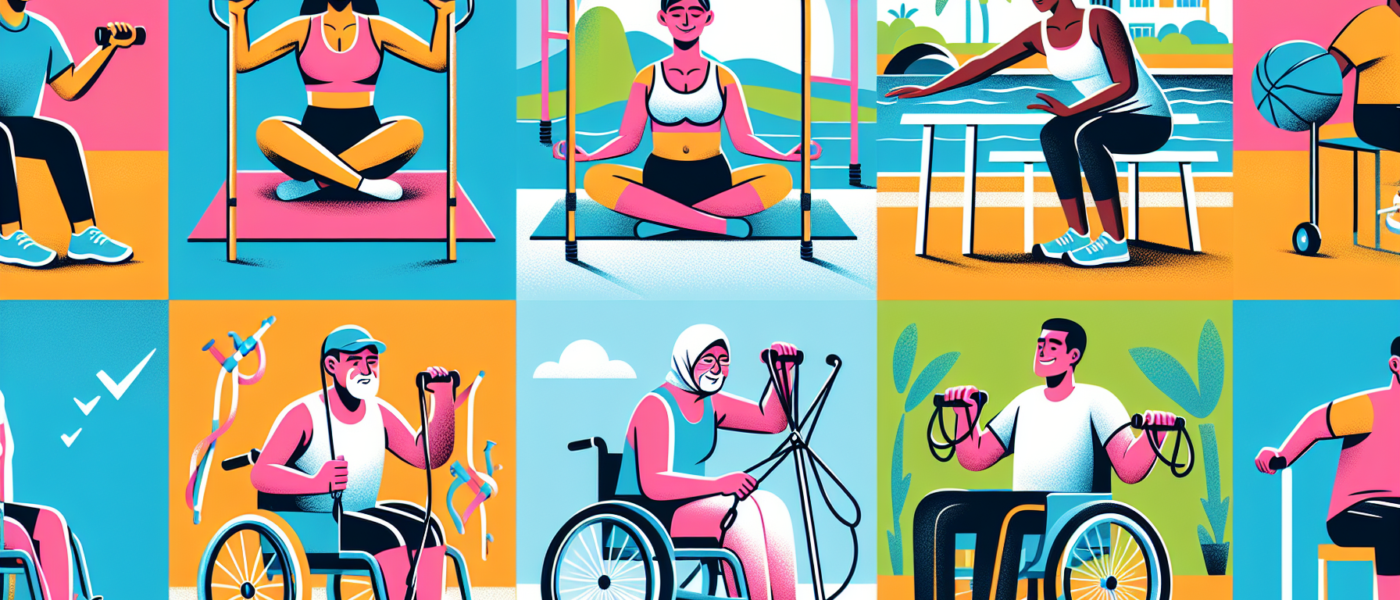How to Stay Fit with Limited Mobility
Key Takeaways
- Understand the importance of physical fitness despite mobility limitations.
- Learn about adaptive exercises tailored for different levels of mobility.
- Discover how to create a balanced fitness routine incorporating strength, cardiovascular, and flexibility exercises.
- Explore tips on maintaining motivation and consistency.
- Gain insight into using adaptive equipment and technology to enhance workouts.
Introduction
Staying fit and healthy is essential for overall well-being, but it can be particularly challenging for individuals with limited mobility. Despite the obstacles, numerous adaptations and strategies are available to help maintain a regular fitness routine. By understanding and incorporating these practices, anyone can make significant strides toward better health, strength, and wellness.
Understanding the Importance of Fitness
Physical fitness plays a crucial role in maintaining both physical and mental health. Regular exercise helps to improve cardiovascular health, muscle strength, flexibility, and balance. For individuals with limited mobility, staying active can also alleviate symptoms related to their condition, improve mental health, and enhance the quality of life.
Furthermore, exercise can help reduce the risk of chronic diseases such as diabetes, heart disease, and obesity. It can also mitigate joint pain and stiffness often associated with limited mobility. Overall, staying active fosters better independence and functionality in daily activities.
Adaptive Exercises for Limited Mobility
It’s essential to select exercises that cater to your level of mobility. Below are several adaptive options divided into categories of strength training, cardiovascular exercises, and flexibility workouts.
Strength Training
Strength training is vital for building and maintaining muscle mass, which supports joints and overall mobility. Here are some adaptive strength training exercises:
- Seated Resistance Band Exercises: Use resistance bands to perform bicep curls, shoulder presses, and chest presses while seated. These help improve upper body strength.
- Arm and Leg Lifts: If you can move your legs, perform seated leg lifts. For arms, try lifting light weights or household objects.
- Chair Squats: Depending on your mobility, perform partial squats by rising slightly from a seated position and then sitting back down.
Cardiovascular Exercises
Cardiovascular exercises are essential for heart health and overall stamina. These can be adapted for limited mobility as follows:
- Seated Aerobics: Perform aerobic movements such as arm circles, marching in place while seated, and other rhythmic activities.
- Hand Pedal Machines: These devices allow upper-body cardiovascular workouts by mimicking the motion of pedaling a bike.
- Swimming or Water Aerobics: If accessible, water activities provide a low-impact, full-body workout that is easier on the joints.
Flexibility and Balance
Maintaining flexibility and balance is crucial for preventing injuries and maintaining mobility. Consider these adaptive exercises:
- Seated Yoga: Use modified yoga poses that can be performed while seated to enhance flexibility and reduce stress.
- Stretching Routines: Incorporate daily stretching focusing on all major muscle groups. Use a towel or resistance band to assist with stretching.
- Tai Chi: This gentle martial art focuses on slow, controlled movements that improve balance and coordination.
Creating a Balanced Fitness Routine
A well-rounded fitness routine should combine elements of strength, cardio, and flexibility exercises. Here’s how to set up a balanced program:
Assess Your Abilities
Start by consulting a healthcare provider or physical therapist to assess your current fitness level and mobility limitations. They can help you determine which exercises are safe and beneficial for you.
Set Realistic Goals
Establish clear, achievable goals that motivate you. For example, aim to exercise for 20-30 minutes three times a week, gradually increasing the duration and intensity as your fitness improves.
Consistent Schedule
Develop a regular exercise schedule that fits your lifestyle. Consistency is key to seeing improvements and maintaining progress.
Mix It Up
Incorporate a variety of activities to keep your workouts interesting and comprehensive. For example, combine seated resistance training with hand pedal machine sessions and seated yoga.
Maintaining Motivation and Consistency
Staying motivated and consistent can be challenging, particularly with limited mobility. Here are some tips to help you stay on track:
Find a Support System
Consider joining support groups, online fitness communities, or exercising with friends and family. Encouragement from others can significantly boost your motivation.
Track Your Progress
Keep a fitness journal or use an app to log your workouts and track your progress. Seeing your improvements over time can be highly motivating.
Celebrate Achievements
Reward yourself for reaching milestones, whether it’s a new piece of adaptive equipment, a healthy treat, or a relaxing day off.
Stay Positive
Focus on what you can do rather than your limitations. Celebrate small victories and continuously strive for improvement.
Utilizing Adaptive Equipment and Technology
Several adaptive tools and technologies can make exercising more accessible and enjoyable for individuals with limited mobility. Some examples include:
Adaptive Equipment
Invest in adaptive equipment such as resistance bands, hand pedal machines, or weighted gloves. These tools can enhance your workout experience by offering versatile exercise options.
Technology Aids
Smartphone apps and online platforms provide access to a wealth of guided fitness programs, adaptive exercise routines, and real-time feedback. Virtual reality (VR) systems can also offer immersive, enjoyable exercise experiences.
Altered Fitness Devices
Many exercise machines now come with modifications for easier access and use, such as accessible stationary bikes and recumbent bikes. These devices often feature adjustable parts to accommodate various mobility levels.
Conclusion
Staying fit with limited mobility might present challenges, but it’s entirely achievable with the right approach and mindset. By focusing on adaptive exercises, creating a balanced routine, and utilizing adaptive tools, you can make significant strides toward improved physical health and well-being. Remember that consistency, motivation, and support are pivotal in maintaining a steady fitness journey. Embrace the process, celebrate your progress, and never underestimate the power of small, consistent efforts toward a healthier, more active life.

